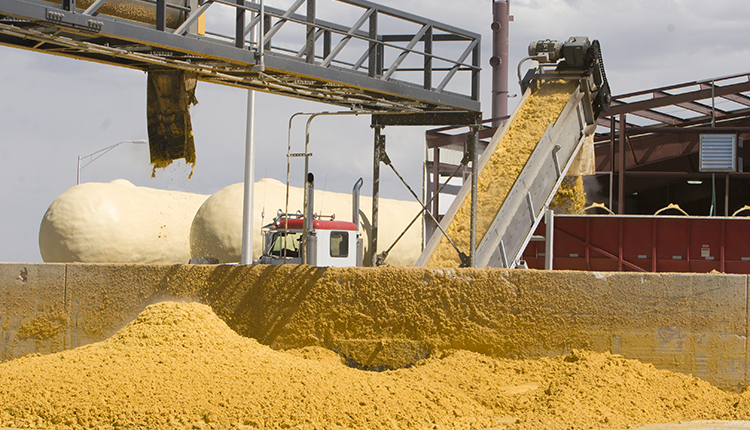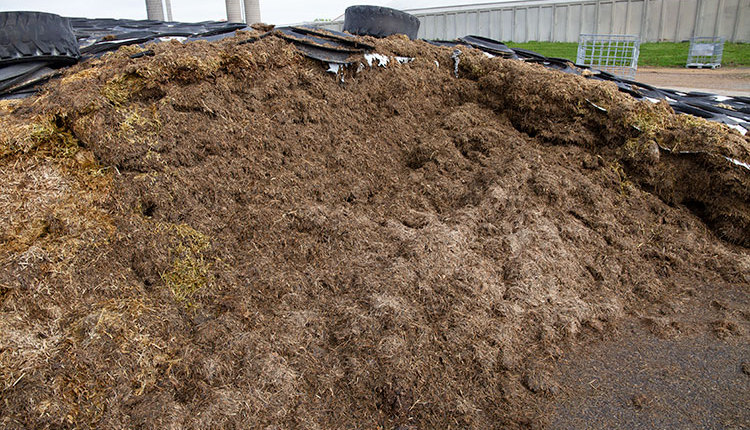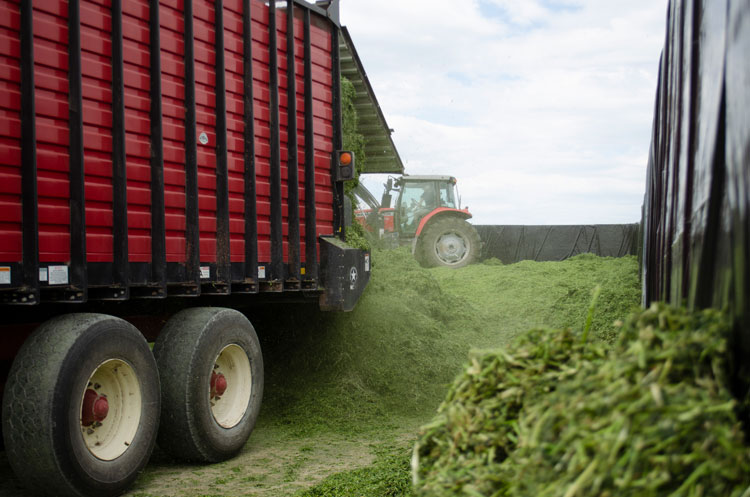
When considering forage fermentation as a measure of forage crop quality, we need to compare it against expected values. Without knowing what is “normal,” it is hard to assess a specific report of fermentation quality.
The characteristics of forage fermentation are best understood by considering them in the context of the dry matter (moisture) level at which a material was ensiled. This is true because the concentration of water-soluble carbohydrate (WSC) is a key driver of fermentation. The wetter the silage, generally the lower the concentration of WSC. This leads to different types of bacteria being favored and different fermentation outcomes. With dryer silages, the concentration of WSC is higher but there is less WSC solubilized and total acid production is reduced.
The following graph is a summary of fermentation acids in legume silages by dry matter range. These are from approximately 1,500 samples evaluated by Cumberland Valley Analytical Services (CVAS) by chemistry methods (gas chromatography) over the last several years. This graph makes apparent the influence of dry matter on fermentation outcome.
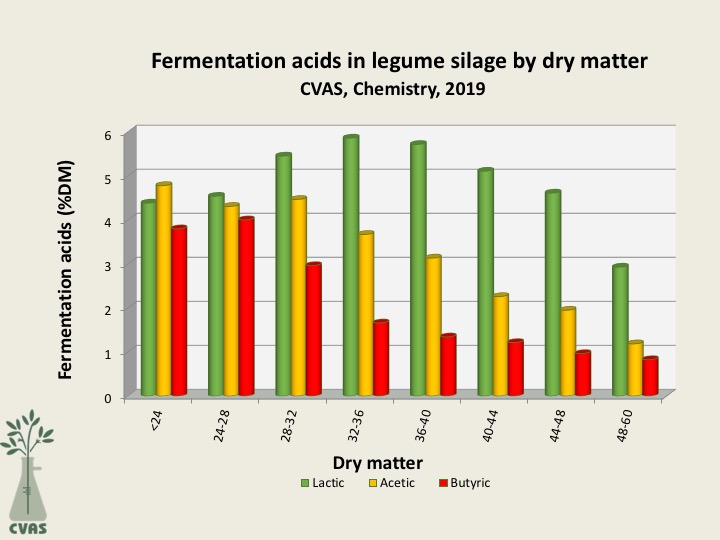
The ratio matters
Fermentations are often defined by the relationship of lactic to acetic acid or total fermentation acids. The higher the proportion of lactic acid, the more efficient the fermentation. However, the relationship of lactic acid to other fermentation acids is dependent on the moisture of the ensiled crop. Consider the graph below that shows the ratio of lactic to acetic acid across dry matter of legume silages.
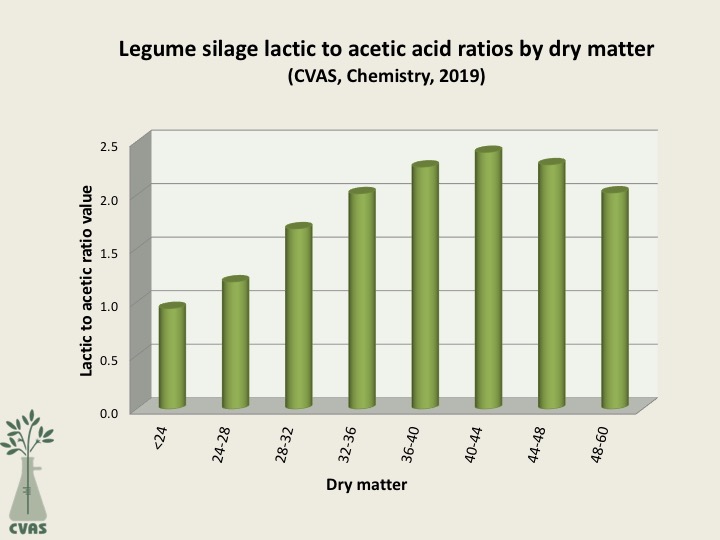
Fermentation characteristics of hay crop silages ensiled at less than 34 percent dry matter often result in fermentations where the pH drop is slow, allowing for clostridial bacteria to predominate. Note the much higher level of butyric acid and increased levels of acetic acid. These silages also have much higher levels of protein breakdown leading to elevated ammonia levels and the creation of histamines. Elevated ammonia and histamine levels lead to physiological challenges to the animal including limitations in dry matter intake and reproductive challenges. Dry matter conservation is not nearly as good in these situations as when legumes are ensiled at proper dry matter levels.
Fermentation profiles are important in that they give us a reference for comparing an individual sample evaluation. They also assist in understanding the most opportune moisture levels for ensiling.







